Coronavirus: Google Maps, City Mapper find Australian habits have changed
Google Maps has discovered a scary trend that shows the staggering extent to which coronavirus has changed our lives.
Big Brother may not be watching us, but Google Maps is.
Google has tracked the mobile phone location of millions of Aussies to see how social distancing has changed their movements.
What the technology giant has discovered in its report is heartening, but also a little scary.
Movement at public transport stations is down a staggering 58 per cent compared to typical levels.
Visits to places such as restaurants, shopping centres and cinemas have fallen by nearly half, coming in at 45 per cent.
RELATED: Follow our live coronavirus updates here
RELATED: The businesses kicking on despite the odds
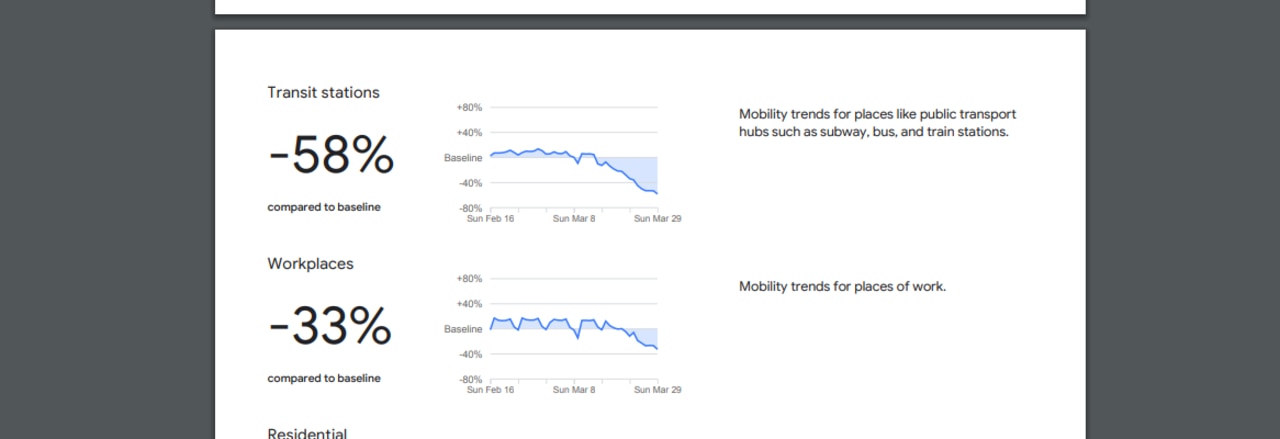
In just three weeks, since the ban of all non-essential gatherings of 500 people, Australians have changed their behaviour drastically.
Major cities all across Australia have become veritable ghost towns.

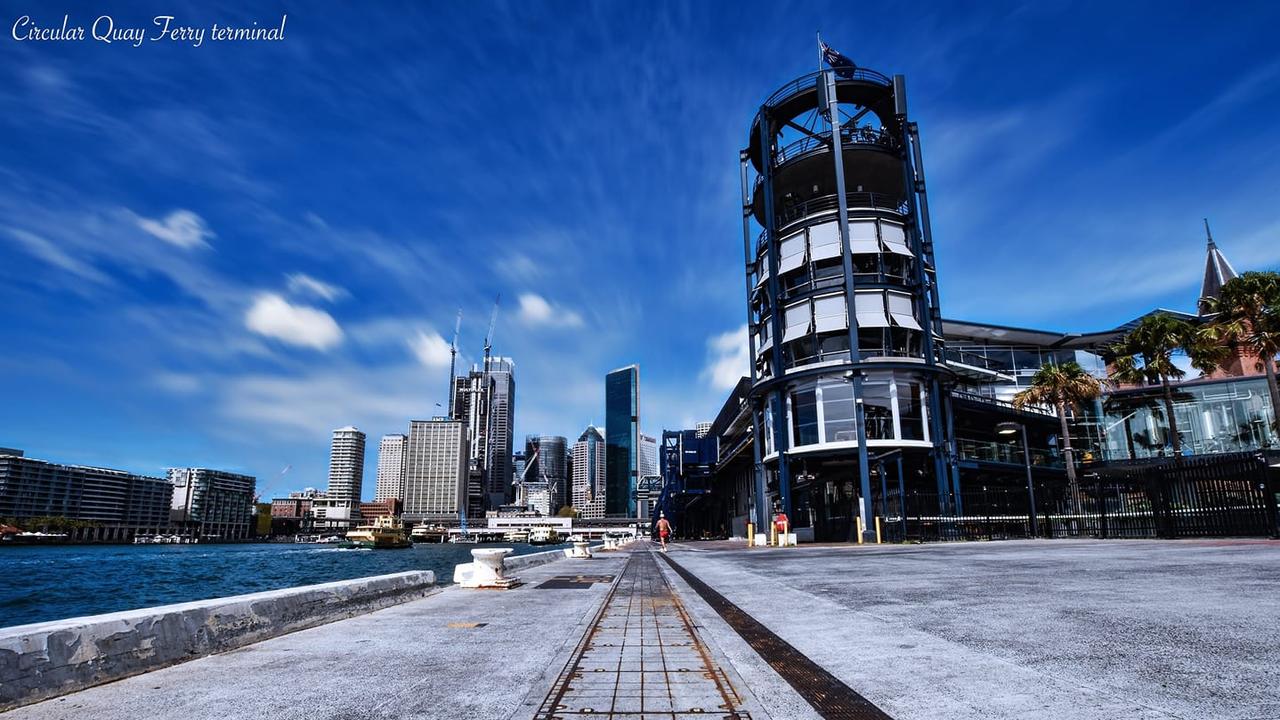
The activity report, using data from February to March 29, shows shopping for essential items at supermarkets, food warehouses, farmers markets, specialty food shops, drug stores and pharmacies is down by 19 per cent, with Aussies trying to reduce their visits.
Residential movement — or people staying at home — was up by 13 per cent, the only area in society that saw an increase.
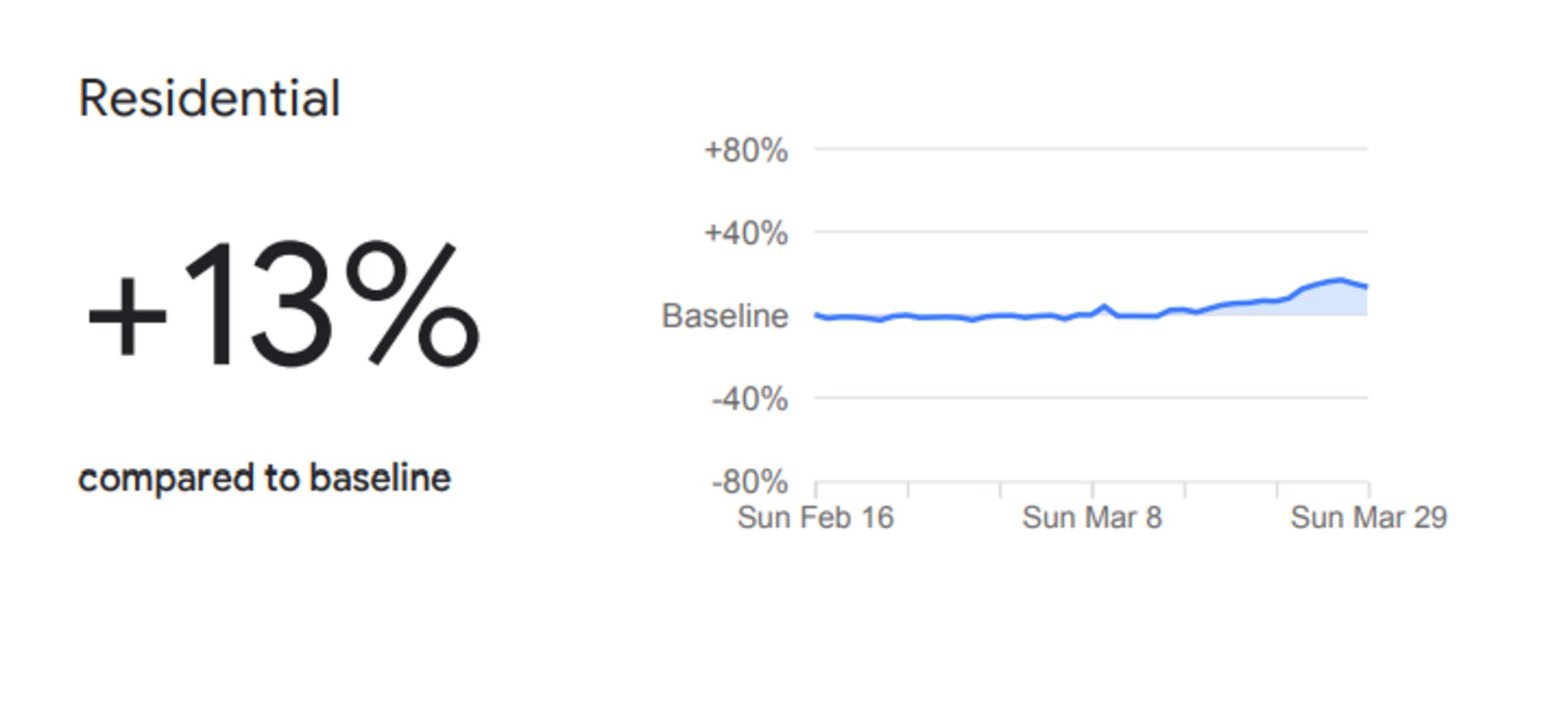
Experts said that if just 10 per cent of Aussies don’t follow the new restrictions, then the lockdown won’t work.
It comes as the total number of confirmed COVID-19 cases in Australia now stands at 5540, at the time of writing.
Google said it had collected the data “to help you and public health officials understand responses to social distancing guidance related to COVID-19.”
Popular travel app City Mapper has also released a report, which found Sydney and Melbourne were at just 13 per cent of their normal activity.

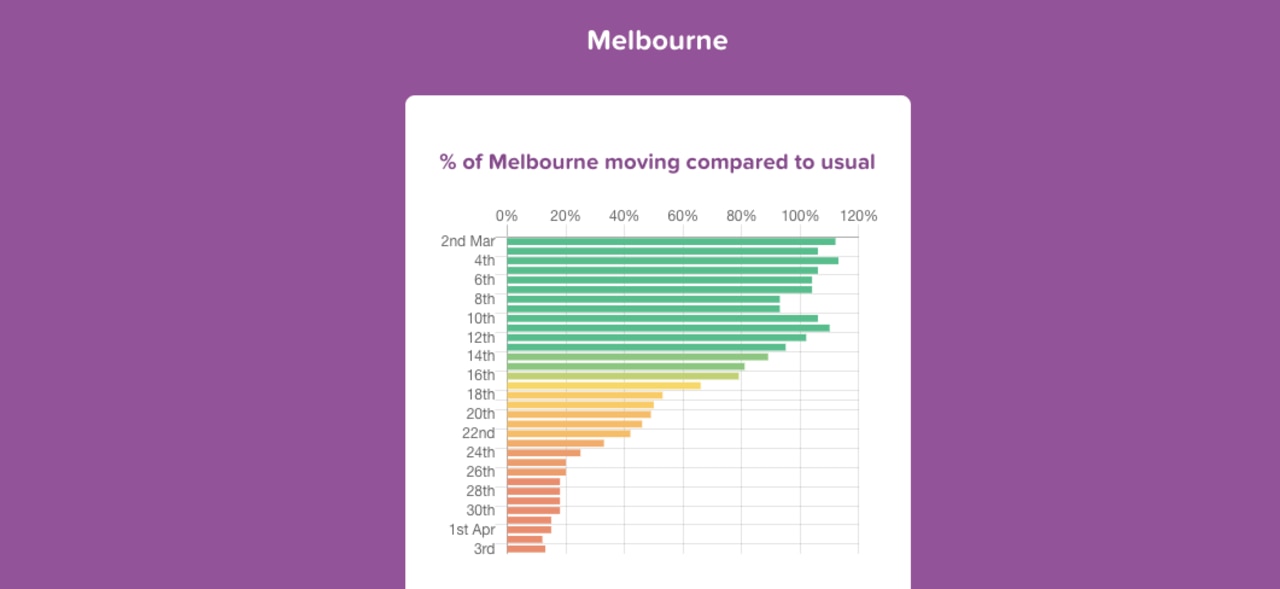
It’s a trend not unique to Australia. Across the world, cities are grinding to a halt.
Cities in full lockdown such as Rome have dropped to as low as 4 per cent mobility.
Barcelona is the most affected city in the world, with City Mapper finding the Spanish city is functioning at just 2 per cent capacity compared to normal.
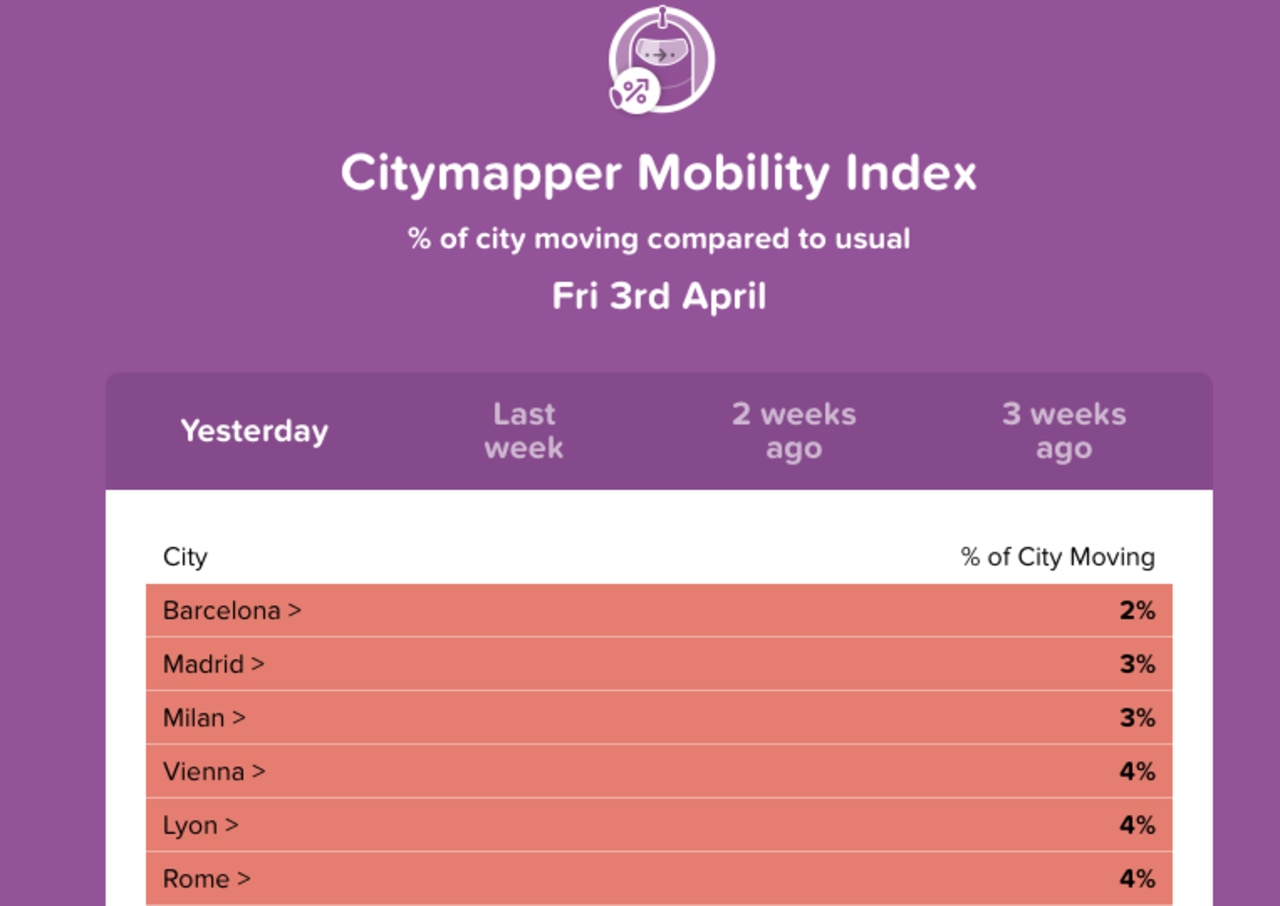
While cities appear to be at a standstill all over the world, Asia is emerging largely unaffected.
Places such as Singapore have managed to control the spread of COVID-19 while maintaining movement about 44 per cent of normal levels.





